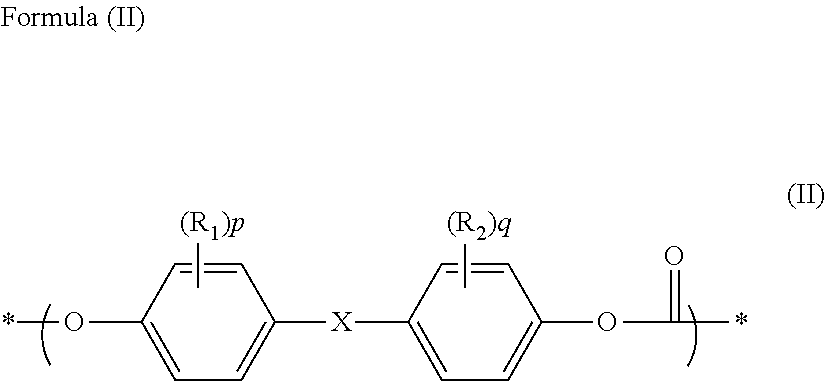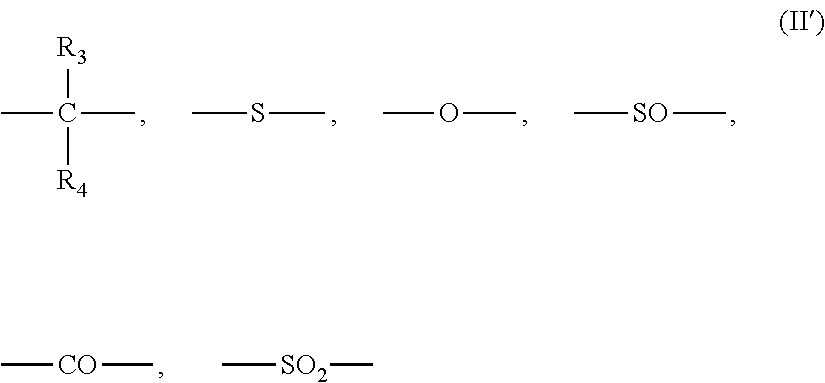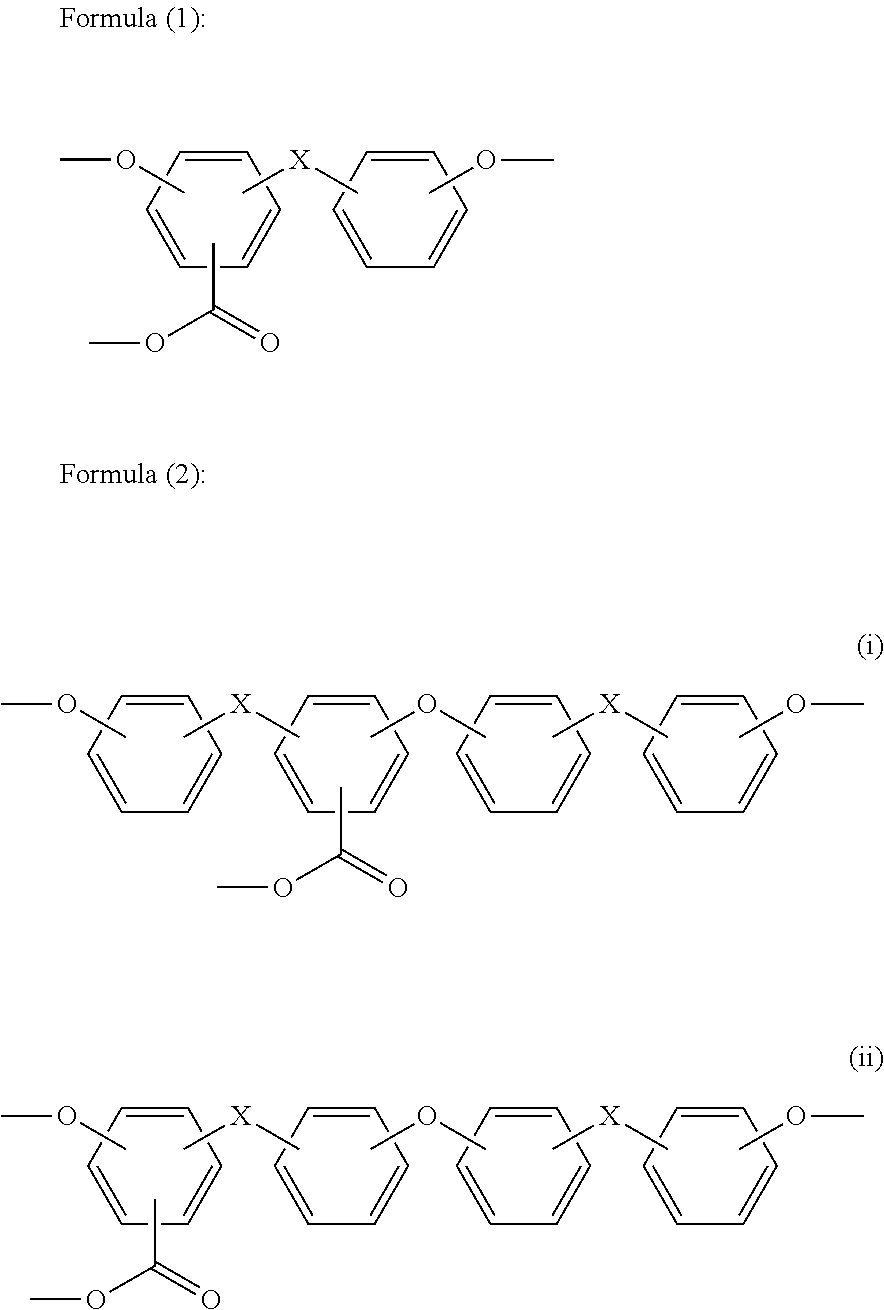Aromatic polycarbonate resin composition
a polycarbonate resin and composition technology, applied in the field of aromatic polycarbonate resin composition, can solve the problems of difficult effect on the physical property of the polymer, affecting the reaction rate, and affecting the quality of the reaction, and achieves the effects of less heterologous structure, high molecular weight, and good quality
- Summary
- Abstract
- Description
- Claims
- Application Information
AI Technical Summary
Benefits of technology
Problems solved by technology
Method used
Image
Examples
example 1
[0354]In 50 L of a reactor made of SUS equipped with a stirrer and a distillation device were charged 10001.0 g (43.808 mol) of 2,2-bis(4-hydroxyphenyl)propane, 10557.0 g (49.281 mol) of diphenylcarbonate and 1.0 μmol / mol-BPA of sodium hydrogen carbonate as a catalyst (the catalyst was calculated as a molar number to the 2,2-bis(4-hydroxyphenyl)propane), and an inside of the system was replaced by a nitrogen atmosphere. The pressure reduction degree was adjusted to 27 kPaA (200 torr), a heating medium was set at 205° C. and the starting materials were melted under heating, and then stirred.
[0355]Thereafter, a temperature of the heating medium was gradually raised, while simultaneously lowering the pressure reduction degree, and phenol distilled from the reaction system was condensed by a cooling tube and removed to carry out transesterification. Over about 4 hours, the reaction system was finally made a temperature of 260° C. and a pressure reduction degree of 0.13 kPaA (1 torr) or ...
example 2
[0358]In 50 L of a reactor made of SUS equipped with a stirrer and a distillation device were charged 10,000.6 g (43.807 mol) of 2,2-bis(4-hydroxyphenyl)propane, 10,560.0 g (49.295 mol) of diphenylcarbonate and 0.5 μmol / mol-BPA of cesium carbonate as a catalyst (the catalyst was calculated as a molar number to the 2,2-bis(4-hydroxyphenyl)propane), and an inside of the system was replaced by a nitrogen atmosphere. The pressure reduction degree was adjusted to 27 kPaA (200 torr), a heating medium was set at 205° C. and the starting materials were melted under heating, and then stirred.
[0359]Thereafter, a temperature of the heating medium was gradually raised, while simultaneously lowering the pressure reduction degree, and phenol distilled from the reaction system was condensed by a cooling tube and removed to carry out transesterification. Over about 4 hours, the reaction system was finally made a temperature of 260° C. and a pressure reduction degree of 0.13 kPaA (1 torr) or lower, ...
example 3
[0363]The same procedure as in Example 2 was carried out except for adding 0.257 g (0.00218 mol) of 2-ethyl-2-methyl-propane-1,3-diol as the aliphatic diol compound to the reaction system. The obtained polycarbonate resin had the weight average molecular weight (Mw)=48,000, the N value=1.23, the terminal hydroxyl group concentration=200 ppm, and the YI value=1.1, and contained the heterologous structure formula (1)=100 ppm, the heterologous structure formula (2)=20 ppm, the heterologous structure formula (3)=60 ppm, and the cyclic carbonate (5-ethyl-5-methyl-1,3-dioxan-2-one)=30 ppm.
[0364]1 g of this resin was charged in a test tube, and in a glove box (oxygen concentration: 0.0%) substituted with nitrogen, dried by a block heater set at 120° C. for 2 hours. Subsequently, in the same glove box, the sample was detained under heating with a block heater set at 360° C. for 60 minutes. As a result, the molecular weight (Mw) retaining ratio (%) before and after the detention test was 75%...
PUM
| Property | Measurement | Unit |
|---|---|---|
| structural viscosity index | aaaaa | aaaaa |
| structural viscosity index | aaaaa | aaaaa |
| length | aaaaa | aaaaa |
Abstract
Description
Claims
Application Information
 Login to View More
Login to View More - R&D
- Intellectual Property
- Life Sciences
- Materials
- Tech Scout
- Unparalleled Data Quality
- Higher Quality Content
- 60% Fewer Hallucinations
Browse by: Latest US Patents, China's latest patents, Technical Efficacy Thesaurus, Application Domain, Technology Topic, Popular Technical Reports.
© 2025 PatSnap. All rights reserved.Legal|Privacy policy|Modern Slavery Act Transparency Statement|Sitemap|About US| Contact US: help@patsnap.com



